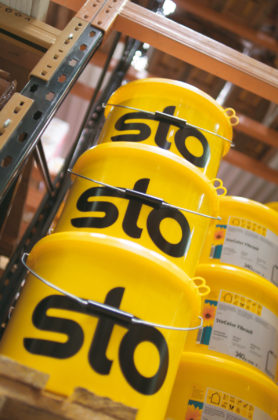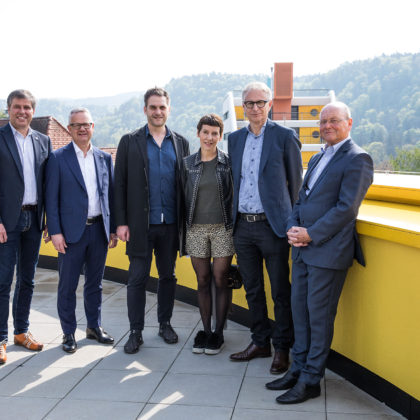F. Farnoudi and A. Hild explore design with EWIS
Just as new shapes and methods were developed in build-ing design during the transition from wooden construction to solid construction at the beginning of the 17th century, insulation construction techniques are also gradually developing their own aesthetic appeal. In their now-completed research project, Faraneh Farnoudi and Andreas Hild focused on the subject of design possibilities, giving significant momentum to the debate.
Facade insulation systems – particularly external wall insulation systems (EWIS) – are among the definitive construction materials of our time. As they are sometimes held accountable when existing buildings are refurbished in a standardised manner, this is probably why planners and tradesmen have not exploited the design possibilities of these systems. “The material is never to blame” – this statement from Karl Joseph Schattner ultimately applies here. Building on the results of the research project “Modulation options for the building envelope with the aid of heat-sensitive phototopography” by Faraneh Farnoudi and Andreas Hild, Sto has now implemented a digital process chain from the design right up to the industrial manufacture of the system. As a result, the research initiative funded within the scope of the “Zukunft Bau” research initiative from the Federal Office for Building and Regional Planning has found a practical application.
Since September 2011, an investigation has been carried out to discover the extent to which a three-dimensional modulation of the insulation layer is able to “make facade design more cus-tomised while also improving the performance of the system.” The starting point of the considerations was the different heat transmissions of different building elements of an existing fa-cade. If the dimensioning of the insulant is adjusted to the dis-parate heat transmission coefficients (U-values), the surface is restructured in accordance with the idea that “form follows function”. The function of the external wall insulation system is reflected in its external form, and “the energy-saving function of the insulated facade is given authentic expression.”
The basis for modulating the insulation system is always a building-specific analysis. At the beginning of the digital process chain, the construction drawings are digitalised and adjusted to the current situation. If substances or requirements are specified, a thermal analysis then follows, either using thermal imaging or by simulating the heat flows. The digital relief derived from this process is a three-dimensional realisation of the isotherms of the existing heat transmissions. The facade is then modelled using cutting procedures or polygon deformation – under the active control of the planner. This ultimately results in a design. The process chain is completed using multi-axial milling machines, which carve out the shapes generated directly from the 3D model from insulation boards (EPS or PIR). Next, it is up to logistics to ensure that all of the boards are labelled in accordance with the layout drawing, packed in the correct order, and delivered to the construction site at the correct time. In the last step, the modulated insulation tablets are installed, reinforced, and rendered.
The research project has now been implemented into industrial manufacturing, focusing primarily on the digital process chain. With this, the data required for designing, production planning and control can be digitally edited and exchanged on a continuous basis. This is the only way to ensure that the required customisation is cost-effective. Producing the individual design in a 1:1 scale presents a particular challenge because, ultimately, both the restrictions caused by the raw material and the installation on the building have to be taken into account. The result is an overall solution that enables Sto to introduce modulated EWIS into the market as individual solutions.
 |
1. Thermography
Image: Sto SE & Co. KGaA
|
||
 |
2. Simulation
Image: Sto SE & Co. KGaA
|
||
 |
3. Modulation
Image: Sto SE & Co. KGaA
|
||
 |
4. Cutting to size
Image: Sto SE & Co. KGaA
|
||
 |
5. Installation
Image: Sto SE & Co. KGaA
|
||
 |
6. Modulation of external wall insulation systems
Image: Sto SE & Co. KGaA
|
||
 |
Image: Sto SE & Co. KGaA
|
||
 |
Under the emblem “iD – Individual Digital Engineering”, Sto gathers services and technical solutions linking parametric de-sign processes with industrial production methods. iD solutions are based on integrated digital process chains. They link the uniqueness of a design with the advantages of high-precision, serial prefabrication such as speed, cost-effectiveness, and above all, the certainty of a high-quality result.
Image: Sto SE & Co. KGaA
|
||
Publication free of charge, specimen copy requested



